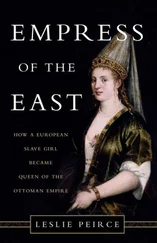Sweden was a small country, with not many more than a million souls. Despite many recent reforms initiated by the King and his able Chancellor, it was still poor, with commerce and industry struggling to develop, and the state coffers empty after years of war by land and sea. It could not afford to fight alone against the resourceful Habsburg Empire. Bereft of allies, Gustav Adolf hesitated. Then, paradoxically, the very lack of money which had stayed his hand now forced it. In Prussia, squadrons of German cavalry who had fought for him against the Poles stood waiting; they were mercenaries, and, though their Polish campaign was over, they could not be disbanded, for there was no money to pay them off. If they were kept in service, payment could be delayed, and so it was decided. The cavalry would be sent to Pomerania, now occupied by imperial troops, and there the rest of the Swedish army would join them.
The forces ranged against the Swedes were led by the Czech Count Wallenstein and General Count Tilly, the latter a Dutch nobleman and a professional soldier, a Jesuit manqué whose devotion to the Virgin Mary and strict personal morality had earned him the epithet of ‘the monk in armour’. 7Wallenstein, though he led his own armies, was neither by nature nor by training a military man. Modestly born, through an advantageous marriage and the cheap purchase of no fewer than 66 estates confiscated from the defeated Bohemian rebels a few years before, he had become one of the wealthiest men in Europe. He was consequently able to raise and pay large armies of his own, and owing to his administrative brilliance, to keep them fully supplied as well. 8
The imperial forces needed Wallenstein, but at this crucial point, unwisely, they let him go. Flush with recent Catholic victories, in March 1629, the Emperor Ferdinand had declared an Edict of Restitution, whereby Protestant worship was to be banned, and the Catholic powers were to reclaim all lands acquired by Protestants since the Peace of Augsburg in 1555, almost 75 years before. It was an extravagant order which looked, even then, impossible to carry out. The areas in question were huge, and it seemed that there were not even enough potential Catholic landowners to claim them. Many leading Catholics opposed the Edict, among them Wallenstein himself. He had in fact been brought up as a Lutheran, and although in his youth he had converted to Catholicism, the armies he now maintained were full of Protestant soldiers. His protest against the Edict was met by his swift dismissal from the imperial forces, who were now to be commanded by Tilly.
The Emperor’s Catholic allies were delighted. They had resented Wallenstein’s swift climb to power, suspecting that Ferdinand was little more than a pawn in the Count’s ambitious hands. But they were soon to regret his departure, for as he went so too did his men, along with many thousands of other imperial soldiers who had also been paid with his money, and fed, clothed, mounted, and armed through his superbly organized lines of supply. In due course Wallenstein would return, but now, to the Emperor’s dismay, the gap left on the battlefields by the armies of his former ally was filled by those of a new and fearsome enemy, Gustav Adolf, the King of Sweden.
The Swedes pressed inland, and on a hot and windy day in the September of 1631, they drew up at Breitenfeld, near the Saxon city of Leipzig, where imperial forces commanded by Tilly were already waiting. At the eleventh hour, the wavering Elector of Saxony, Johann Georg, had thrown in his lot with the Swedes; his own land was now at stake, and he had arrived to do battle himself at the head of his ranks of young noblemen, with their new-polished armour and their gaily coloured cloaks – ‘a cheerful and beautiful company to see,’ said Gustav Adolf, and so indeed they must have seemed by comparison with his own hardbitten men in their torn and dusty outfits.
Tilly’s forces had begun to fire as soon as their opponents came into sight, but the imperial general, despite his great experience, was soon disconcerted by the novel ‘chessboard’ manoeuvres of the Swedes, whose agile little squares of alternating cavalry and infantry swivelled to fire in all directions, easily outmanoeuvring Tilly’s traditional forward-facing lines. 9Despite a dazzling sun against them, and despite the hasty departure of the frightened Saxon Elector and most of his novice troops, the Swedes achieved a resounding victory, in no small part due to the brilliant planning and indefatigable energy of their own remarkable King. 10
And by morning, of the host of imperial soldiers who had survived the battle only to be taken prisoner by the Swedes, many thousands had enlisted in the service of their yesterday’s foe. After the Battle of Breitenfeld, mercenaries from all parts of Europe flocked to the Swedish standard. By 1632, as well as substantial forces in Prussia and the Baltic, on the seas and at home on Swedish territory, Gustav Adolf had some 120,000 men fighting in the German lands. Of his great army, perhaps one-tenth were native Swedes. The remainder, mostly mercenaries, were drawn from east to west: Finns and Germans, Scotsmen, English and Irish, Frenchmen, Dutchmen, Czechs and Poles and Russians, their motives for fighting as varied as their origins.
The fortunes of war of the Emperor Ferdinand were now at their lowest ebb. The Swedes’ position seemed unassailable. At this point, Gustav Adolf could have offered a peace settlement, but he chose to fight on, expanding his territories and claiming hesitant allies among the German princes, both Protestant and Catholic. In the spring of 1632, his soldiers cut a triumphal path through southern Germany towards Bavaria. In early April they crossed the Danube river, leaving in their wake a devastated countryside from which no pursuing army might take sustenance. By the middle of May they stood at the gates of Munich, where they met with no resistance; a huge ransom had purchased the safety of the city and its people. From Munich, Gustav Adolf hoped to entice the Emperor’s forces into battle, and then to march on the imperial capital of Vienna.
On the Bohemian border, the Generalissimo Wallenstein waited with his own army. He had himself raised it, equipped it, and paid it, but as yet he refused to lead it into battle. Since his dismissal from the imperial command, he had ignored all attempts to reinstate him, but now it seemed that the price he demanded to do so was about to be paid. The price was enormous: absolute control over the imperial armies and over all peace treaties, huge areas of Habsburg lands, and the title of Elector. 11But, with Gustav Adolf nearing Vienna, the desperate Emperor conceded everything.
His extravagant terms agreed, Wallenstein moved his army into Prague itself, barring the Swedish army’s way to Vienna. The King’s allies wavered, and in June a hesitant Gustav Adolf withdrew to Nuremberg. There, over the next few days, he revealed his plan for the future of Germany. The lands of the Holy Roman Empire were to be completely reorganized. The power of the Habsburg dynasty would be broken, and a new, dominant body of Protestant princes, the Corpus Evangelicorum , would take its place under an elected president, Gustav Adolf himself. The ban on Protestant worship was to be withdrawn, and religious toleration practised throughout the Empire. Peace would be maintained by a strong standing army.
The Corpus Evangelicorum was an idea born of crisis, an interim plan to provide cohesion and leadership for the duration of the war. It implied no long-term political objectives, and was not intended as a blueprint for a Swedish empire in the German lands. So at least said the Swedes, but few, and least of all the group’s proposed members, regarded it so innocently. As the German campaigns had progressed, it had seemed to them increasingly clear that Gustav Adolf harboured major dynastic ambitions for himself, ambitions which had much to do with their own German territories.
Читать дальше












